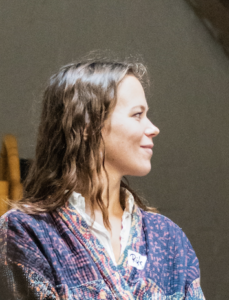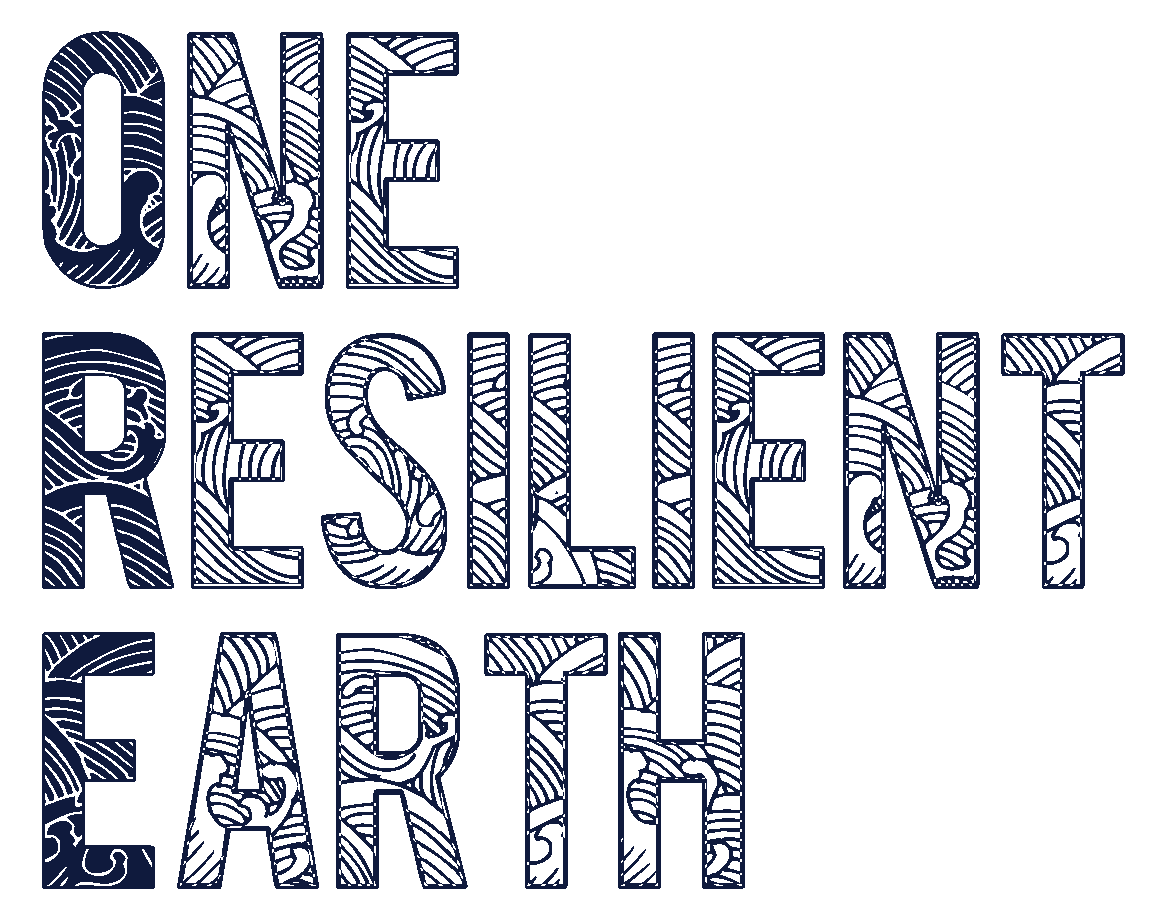In a three-part article, Rūta Žemčugovaitė reflects on Flourish! the Learning Journey designed by One Resilient Earth that she joined in September 2022. She also highlights the influence of the Learning Journey on her artistic practice. This first part of the article addresses Disentangling from Notions of Modernity.
“The courageous conversation, almost by definition, is the conversation you do not want to have.” David Whyte
I joined the Flourish! learning journey in September 2022, with an open mind, ready to connect with youth that are seeking to learn about resilience and regeneration, whilst facing climate change. Fronting a multiplicity of crises, sometimes we are left feeling powerless—and this feeling gains further gravity in isolation. However, when we resist falling into powerlessness and take the first vulnerable step towards sharing our stories with the community around us, these feelings can gain a certain fluidity. They can even transform into new shapes of aliveness—the ongoing generative force that is able to move through your body and express itself through creativity.
In this three-part article series, I share my journey of transformation: loosening from the grip of doubt and isolation, to stepping into regenerative creativity that allows me to channel these feelings into my art and work. The process of transformation cannot happen without one crucial aspect: the vulnerability of sharing who you are. Who you are in this moment in time, how you truly feel, what you truly think, and what you deeply desire. Vulnerability isn’t just about feelings, it’s about personal truth—the edge of authenticity—and the edge of discomfort that allows your truth to connect with others.

“Fruit without a seed does not need a pollinator. Seedless fruit is not vulnerable to expectation and availability, it is not vulnerable to absence. Its flower does not extend, nor open itself towards an insect or a bird.”
When the world is unravelling with a multiplicity of crises in front of us, we unravel together with it. We lose meaning, previously handed down by the values and virtues of the modern world. Hands of the modern world are full of promise, yet empty of aliveness—a tree, genetically engineered to bear a seedless fruit. Fruit without a seed does not need a pollinator. Seedless fruit is not vulnerable to expectation and availability, it is not vulnerable to absence. Its flower does not extend, nor open itself towards an insect or a bird. It doesn’t need to bear the nakedness of exposing its colors: to paint itself pastel violet, glistening honey yellow, or meadow blue to invite a pollinating guest. It is a water-full clone without progeny. Fruit flesh is what holds a vulnerable seed, fruit exists because there is a seed. But in the modern world, vulnerability has been engineered out of the sweetness, bitterness, juiciness, sourness, crispiness, and aliveness of our collective experiences.

“The ecological self is fundamentally vulnerable to all aspects around it, vulnerable to natural needs and rhythms it cannot name, nor understand in isolation.”
Yet we are deeply vulnerable to each other. Within me lives a need for you, lives a vulnerability of the need to be seen by you, to be connected to you, to be in becoming with and alongside you. My wounds, so as yours, are open to the fleshiness and sweetness of belonging, rapture in communal ritual and healing. My voice trembles, as it weaves a fruit with a potent seed in it. Planted in soil, my vulnerability can root and find other mycorrhizal connections, not visible in the daylight of the modern world. When we receive each other’s vulnerability towards each other, we grow into fruits that hold each others’ seeds.
Only in modernity healing is a solitary process, obsessed with individual restoration to normalcy and productivity. Western culture lives in amnesia of the ecological self that requires communal soil, watering of meaning, nourishment of beauty, and temporal self-expressions. The ecological self is fundamentally vulnerable to all aspects around it, vulnerable to natural needs and rhythms it cannot name, nor understand in isolation.
When I tried to make sense of feelings of desperation and meaninglessness on my own, I kept running into a loop. My own mind has become an echo chamber, unable to break patterns by itself. And this is the paradox, I guess when we grow up in deeply individualist cultures, we are expected to figure out things on our own—but this is the biggest lie. We were never meant to “process things” on our own, or face the complexity of the world on our own.

Healing is not seedless. Healing is a ripe fruit, fallen on the ground, torn and bursting open—allowing its seeds of vulnerability to be absorbed into the soil, and its sweetness shared with other living beings. Healing is walking the edge of the discomfort of sharing personal truth—we are liberated in the conversations we were not willing to have; we are set free in revealing the aspects of us we were not willing to disclose. The world awaits our freedom.
What is the conversation you do not want to have? What is the question you are afraid to ask?
I have opened up in sheer terror of that edge of discomfort, sharing my alien truth in front of others in the Flourish! learning journey. I didn’t know how to formulate the question, rather I wanted to share my state of being, my vulnerability, and my confusion. To let others perceive my dislocation of normalcy. To reveal metamorphosis in action without an expectation to be understood. The response I received to my question has turned out to be something that I’ve been waiting for the whole year, without knowing it. It brought meaning to the art project I have been working on for the past year. I will share this question with you in part two of this series, with the meaning of artwork following in part three.

“Healing is not seedless. Healing is a ripe fruit, fallen on the ground, torn and bursting open—allowing its seeds of vulnerability to be absorbed into the soil, and its sweetness shared with other living beings.“
Here you can read the second part and the third part of the article.

Rūta Žemčugovaitė is a Berlin-based multi-disciplinary artist, researcher, & facilitator of transformation. She writes Regenerative Transmissions, a newsletter about a deep desire to move away from extractive relating to the living world, into regenerative and mutual interbeing. Her work inquires into regenerative futures through researching mycelium as a co-creator and designing experiences of perception change for more-than-human imagination.
